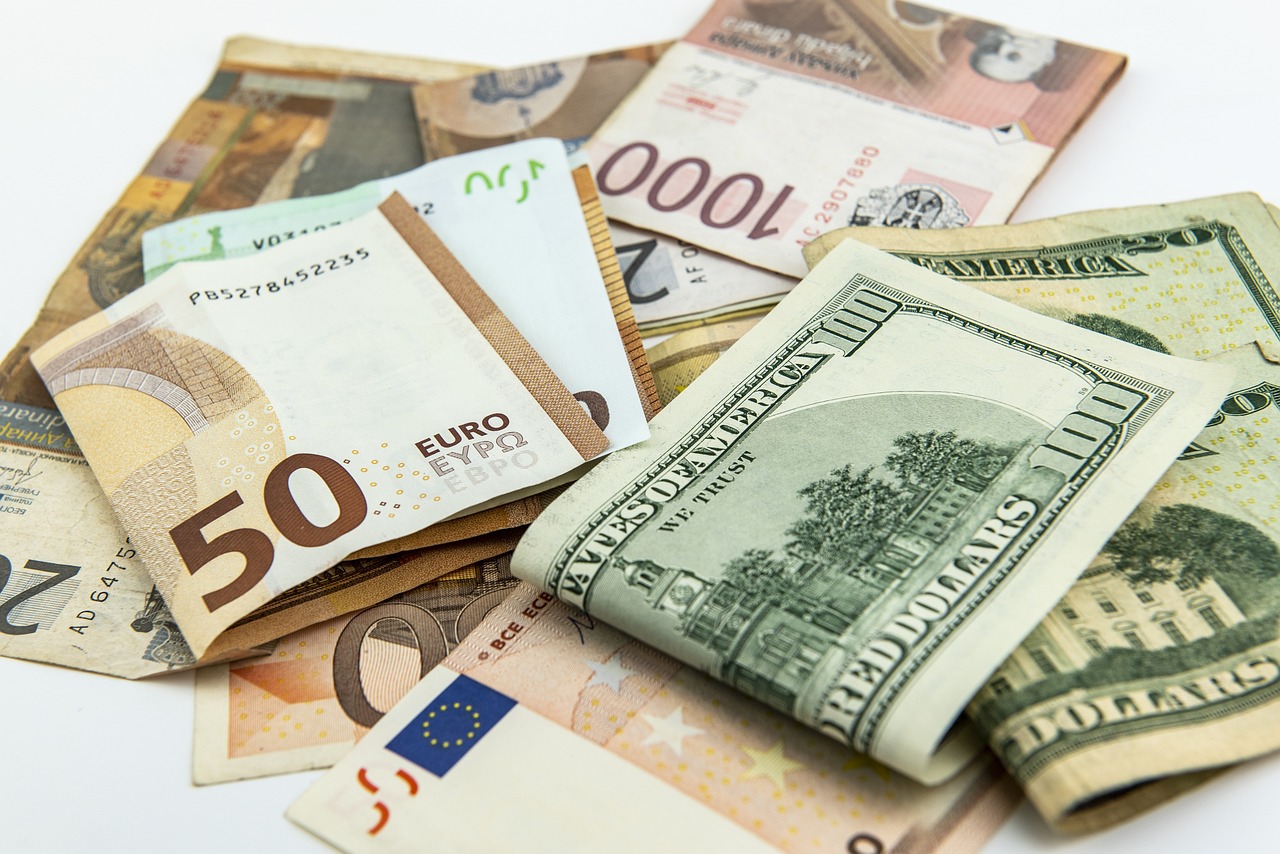Understanding the Dollar-Euro Exchange: Fees, Risks, Predictions, and Economic Impact
GPT_Global - 2025-10-22 04:00:12.0 103
How much is 1 dollar worth in euros after fees in foreign currency exchanges?
When sending money abroad, one of the most important factors to consider is how much your currency will be worth after fees and exchange rates. For example, if you're sending $1 to Europe, you might wonder how much it will convert to in euros. The value of $1 in euros can fluctuate depending on various factors, including market exchange rates and the fees charged by foreign currency exchange services.
Foreign exchange providers often charge a fee for converting currencies, which can range from a fixed amount to a percentage of the total transaction. Additionally, the exchange rate itself may not be the official market rate; providers typically add a margin to it, which can further reduce the value of your dollar. As a result, the amount of euros you receive could be lower than expected.
To get the best deal, it's essential to compare exchange rates and fees from different providers before making a transaction. Many remittance services offer competitive rates and lower fees, helping you send money more efficiently and at a better value. Always check the total cost before proceeding to ensure you’re getting the best possible return on your dollar.

What are the risks involved in trading currencies like the US dollar and euro?
Trading currencies like the US dollar (USD) and euro (EUR) can offer opportunities for profit, but it also involves significant risks that remittance businesses should understand. Exchange rates between these major currencies fluctuate constantly due to global economic events, political changes, and interest rate shifts. This volatility can impact the cost of sending or receiving money across borders.
One major risk is exchange rate fluctuation. Even small changes in USD/EUR rates can affect the value of international transfers, potentially reducing profit margins for remittance providers. Businesses that do not hedge their currency exposure may face unexpected losses. Additionally, global market instability, inflation, and changes in monetary policy can increase uncertainty.
To manage these risks, remittance companies often use real-time exchange rate monitoring and forward contracts to lock in favorable rates. Reliable partners and secure digital platforms are also essential to ensure smooth transactions. By understanding and managing currency risks effectively, remittance businesses can protect their revenue and provide customers with more consistent and transparent transfer services.
Is it possible to predict the value of 1 dollar in euro next month?
In the world of remittance, currency exchange plays a crucial role in determining the cost and value of money transfers. One of the most frequently asked questions is, "Is it possible to predict the value of 1 dollar in euro next month?" While there are no guarantees, several factors influence the USD/EUR exchange rate, including economic data, political events, and global market trends. Understanding these factors can provide insights into potential shifts in value.
Many financial experts use tools such as historical trends, market sentiment, and indicators like inflation, interest rates, and GDP growth to forecast future exchange rates. However, due to the volatile nature of global markets, these predictions can be uncertain. Political events such as elections or changes in fiscal policy can also impact the dollar's value against the euro.
For remittance businesses, staying informed about these trends and offering competitive exchange rates is essential. While predicting the exact value of 1 dollar in euro is challenging, understanding the factors that influence the exchange rate can help businesses make more informed decisions for their customers.
How does the strength of the euro impact US businesses trading in Europe?
As the global economy becomes increasingly interconnected, fluctuations in currency values can significantly impact businesses across borders. One crucial factor for U.S. businesses trading in Europe is the strength of the euro. A strong euro means that the value of the euro is higher compared to other currencies, including the U.S. dollar. This can lead to increased costs for American companies importing goods or services from the Eurozone, as it takes more dollars to purchase the same amount of euros.
On the flip side, a weaker euro can benefit U.S. businesses by making European goods and services more affordable. This is especially important for remittance businesses, which often deal with currency exchanges and cross-border transactions. A strong euro could increase the cost of sending funds to Europe, while a weak euro might lower costs, making remittance services more appealing to customers sending money abroad.
Ultimately, the strength of the euro plays a critical role in determining how U.S. businesses, especially those in the remittance sector, manage international transactions. Monitoring currency trends is essential for maintaining competitive pricing and minimizing financial risks.
What is the difference between the spot rate and the forward rate for 1 dollar to euro?
In the world of international remittance, understanding exchange rates is crucial for both businesses and individuals. The spot rate and the forward rate are two key terms often used in foreign exchange markets, particularly when dealing with the conversion of currencies like the US dollar to the Euro.
The spot rate refers to the current exchange rate at which one currency can be exchanged for another immediately, usually within two business days. For example, if the spot rate for USD to EUR is 0.85, this means 1 US dollar can be exchanged for 0.85 Euros right now. Spot rates are typically used for transactions that occur in the present moment.
On the other hand, the forward rate is an agreed-upon rate for a currency exchange that will take place at a future date. It is used by businesses or individuals who want to lock in an exchange rate for a transaction that will happen later. The forward rate takes into account various factors like interest rates and economic conditions, and it may differ from the spot rate.
For remittance businesses, understanding the difference between these rates can help optimize currency conversion strategies and offer competitive services to customers sending money internationally.
How do economic indicators like GDP growth influence the dollar-euro exchange rate?
In the world of remittance, understanding how economic indicators like GDP growth impact the dollar-euro exchange rate is essential for businesses and customers alike. Economic indicators such as Gross Domestic Product (GDP) growth play a significant role in currency fluctuations, directly affecting international money transfers.
When a country’s GDP grows, it generally indicates a robust economy. As a result, its currency tends to appreciate, which impacts the exchange rates between the dollar and the euro. A strong GDP growth in the U.S. can lead to a stronger dollar compared to the euro, while growth in the Eurozone might strengthen the euro against the dollar. These fluctuations can have a profound effect on remittance businesses and their pricing structures.
For remittance providers, fluctuations in exchange rates are crucial as they influence the cost of sending money abroad. A favorable exchange rate can lower costs for customers, while an unfavorable one can increase transfer fees. Therefore, staying updated on GDP growth trends and their influence on currency values helps remittance businesses remain competitive and provide the best value for customers.
How does the US Federal Reserve’s policy affect the exchange rate between the dollar and the euro?
The U.S. Federal Reserve’s monetary policy plays a significant role in shaping the exchange rate between the dollar (USD) and the euro (EUR). The Fed's decisions on interest rates and inflation targeting directly impact the strength of the U.S. dollar against foreign currencies, including the euro.
When the Federal Reserve raises interest rates, the U.S. dollar often strengthens because higher rates offer better returns on investments denominated in dollars. This makes the dollar more attractive to global investors, which leads to an increase in demand for the currency. Consequently, the euro might weaken against the dollar.
Conversely, when the Fed cuts interest rates or signals that it will do so, the dollar tends to weaken as lower interest rates make investments in the U.S. less attractive. This can lead to the euro strengthening relative to the dollar, affecting remittance rates for businesses that exchange these currencies.
For businesses involved in remittance services, staying informed about the Fed’s policy decisions is crucial. Exchange rate fluctuations impact the costs and efficiency of cross-border transfers, making it essential for remittance companies to monitor the Federal Reserve’s actions closely.
About Panda Remit
Panda Remit is committed to providing global users with more convenient, safe, reliable, and affordable online cross-border remittance services。
International remittance services from more than 30 countries/regions around the world are now available: including Japan, Hong Kong, Europe, the United States, Australia, and other markets, and are recognized and trusted by millions of users around the world.
Visit Panda Remit Official Website or Download PandaRemit App, to learn more about remittance info.



